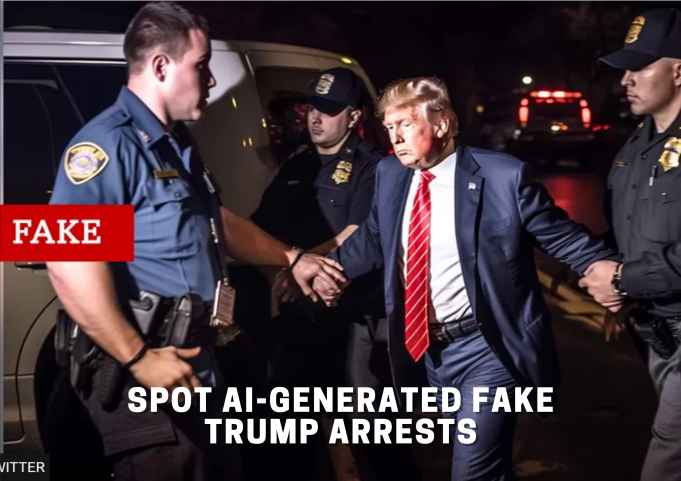Fake images of Donald Trump created by artificial intelligence (AI) tools have been circulating on social media over the past week. These images falsely depict the former president’s arrest, despite the fact that he has not yet been charged with a crime. Although many of those sharing the images pointed out that they were fake, some people were still fooled. On Thursday, Mr Trump shared an AI-generated image of himself kneeling in prayer on his own social media platform, Truth Social. Despite the fact that these images are not real, they still have the potential to mislead people and cause confusion.
This article examines a photo of President Donald Trump and a police officer that has been circulating on the internet. A closer look reveals that the image is not authentic, as Mr Trump’s arm appears to be too short and the police officer is grabbing something that looks more like a claw than a human hand. Additionally, Mr Trump’s head appears to have been superimposed onto the image. This article serves as a reminder to be vigilant when it comes to online content, as it is not always what it seems. It is important to take the time to look closely at images and videos to ensure that they are genuine before sharing them with others.
Current technology is not yet able to accurately depict certain body parts, such as hands, according to AI expert Henry Ajder. Ajder, presenter of the BBC radio series The Future Will be Synthesised, explains that when zooming in on images, inconsistencies such as the number of fingers can be seen. This is due to the fact that current technology is not yet advanced enough to accurately depict these body parts. As such, Ajder believes that further research and development is needed in order to create more realistic images of hands and other body parts. This could help to improve the accuracy of AI-generated images and create more realistic depictions of people.
AI experts have warned that the speed of progress in the field of AI-generated fake imagery is a cause for concern, as it could be used for malicious purposes. They agree that it is easy to spot faked images of famous people like Donald Trump, but it could be more difficult to identify images of unknown people. The experts urge caution, as the technology is becoming increasingly sophisticated and could be misused.













